
Roots
The very first strand of hair that graced a human head holds a story, a deep whisper from epochs long past. For those whose ancestry traces through the luminous, sun-drenched landscapes of Africa, this whisper carries a profound resonance, speaking of identity forged in fire and sun. Textured hair, a marvel of biological ingenuity, carries within its spiral and coil the echoes of ancient adaptation, a testament to resilience from the earliest human ancestors.
Its unique structure, a protective canopy, shielded scalps from intense ultraviolet radiation, allowing for an evolutionary advantage in environments where survival depended on every subtle physiological advantage. This is not merely a biological attribute; it is a living archive, a cellular memory of journeys, sun, and ancestral ingenuity, particularly concerning the inherent qualities of Afro-textured hair.
Our exploration of textured hair begins with its very substance, delving into the foundational knowledge that grounds its remarkable qualities. This is the realm of the hair codex, where biology, classification, and the language used to describe textured hair intersect with the enduring spirit of heritage. We seek to understand not just what hair is, but what it has always meant, how its physical characteristics have shaped cultural identity and ancestral practices across generations. The story of each curl, each coil, is a testament to survival, beauty, and tradition.
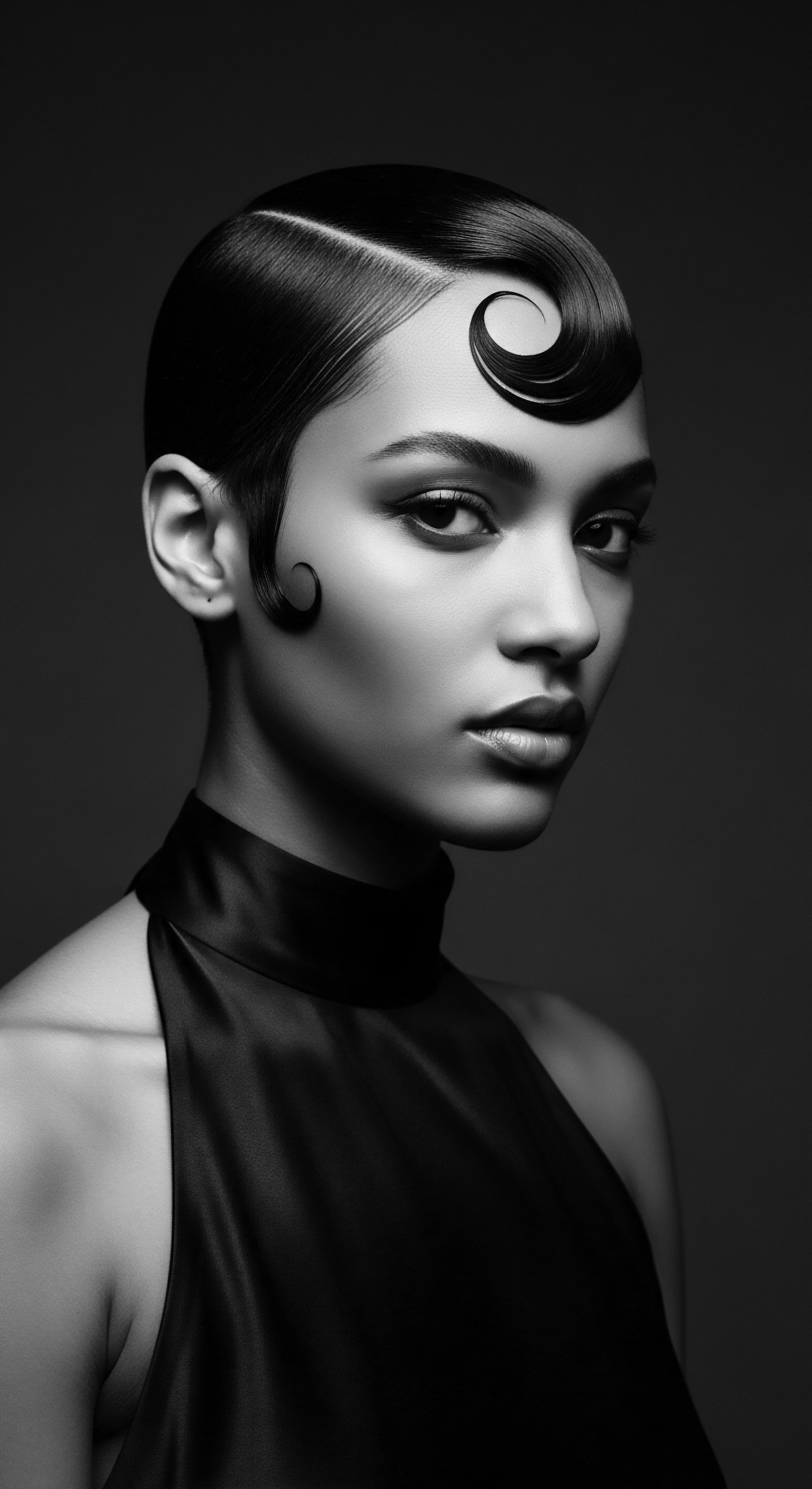
Hair Anatomy and Ancestral Wisdom
The architecture of Afro-textured hair stands distinct, a marvel of natural design. Unlike hair shafts that might be round or oval, those of Afro-textured hair often exhibit a flattened elliptical shape, a subtle yet significant difference that accounts for its characteristic curl and coil patterns. The follicles, too, curve before emerging from the scalp, dictating the hair’s tightly wound trajectory. This inherent curvature, while granting its striking appearance, also introduces points of delicacy, areas where the strand naturally bends, creating junctures that require mindful care.
This anatomical reality has been understood, perhaps intuitively, by ancestors for millennia. They crafted care routines not just for aesthetics, but for the preservation of this distinctive and beautiful structure, practices informed by observation and collective wisdom. Our forbears recognized the need for gentle handling, for moisture-rich ingredients, and for protective styles long before modern science could pinpoint the exact cellular mechanics.
Afro-textured hair, with its unique elliptical shaft and curved follicle, represents an ancestral adaptation for sun protection and a deep marker of identity.
Consider the science of Shrinkage, a characteristic often observed in highly coiled textures. What appears as a reduction in length is merely the hair returning to its natural coiled state when wet or exposed to humidity. This is not a flaw; it is an intrinsic property, a testament to the hair’s elasticity and its genetic blueprint. Historically, this property was not seen as something to be “tamed” or “straightened,” but rather understood as a part of the hair’s natural expression.
Ancestral care practices often celebrated this natural behavior, working with the hair’s inclination rather than against it, allowing its coiled beauty to flourish in its own way. This ancestral wisdom often centered on moisturizing agents and protective styling, strategies that honor the hair’s inherent structure.

Classifying the Coil Patterns
Modern classification systems, often categorized by numbers and letters (e.g. 3A to 4C), attempt to map the spectrum of curl patterns seen in Afro-textured hair. While these systems offer a useful contemporary lexicon for identification and product selection, it is wise to recall that the diverse world of textured hair existed long before such numerical categorizations. In countless pre-colonial African societies, the nuances of hair texture, density, and style conveyed information far beyond a simple curl pattern.
Hair spoke volumes about one’s age, marital status, social rank, spiritual beliefs, and even tribal affiliation. The Mandingo people, for example, might exhibit deeper ebony, tightly kinked curls, contrasting with the looser, more flowing locks of the Ashanti. These distinctions were not abstract; they were lived, visible markers of community and belonging. The very notion of a “type” was tied to a profound, communal understanding of identity and place within the collective.
The classification of hair in ancestral contexts was an intimate, shared understanding rather than a rigid chart. It was a language spoken through touch, through communal grooming rituals where the differences and similarities of hair were recognized, celebrated, and cared for collectively. This approach stood in stark contrast to later attempts to categorize and devalue Afro-textured hair based on Eurocentric standards, an oppressive system that sought to diminish its natural beauty and link it to pejorative terms like “wooly”. Such historical impositions highlight the enduring importance of reclaiming a narrative rooted in ancestral appreciation and understanding.

Lexicon of Textured Hair Heritage
The language we use to describe textured hair carries weight, for words shape perception. A lexicon rooted in heritage transcends mere scientific terminology, drawing from ancient practices and the lived experiences of generations. Consider the terms that speak of traditional care:
- Tignon ❉ A head covering mandated for Black women in colonial Louisiana, which became a powerful statement of self-expression and resistance when adorned with vibrant colors and elaborate arrangements.
- Amasunzu ❉ A traditional Rwandan hairstyle, often worn by men and unmarried women, characterized by intricate, sculpted patterns that conveyed social status and readiness for significant life events, sometimes even battle.
- Kiko ❉ A Yoruba term for thread-wrapping, a styling method that involves wrapping hair with natural fibers to stretch and elongate curls, a practice that speaks to an ancient understanding of hair manipulation without heat.
These terms, a small sample of a vast cultural vocabulary, speak to a world where hair was a canvas for communication, a marker of identity, and a repository of history. They remind us that the conversation around textured hair is deeply historical, connected to an enduring legacy of cultural expression that predates modern beauty standards.
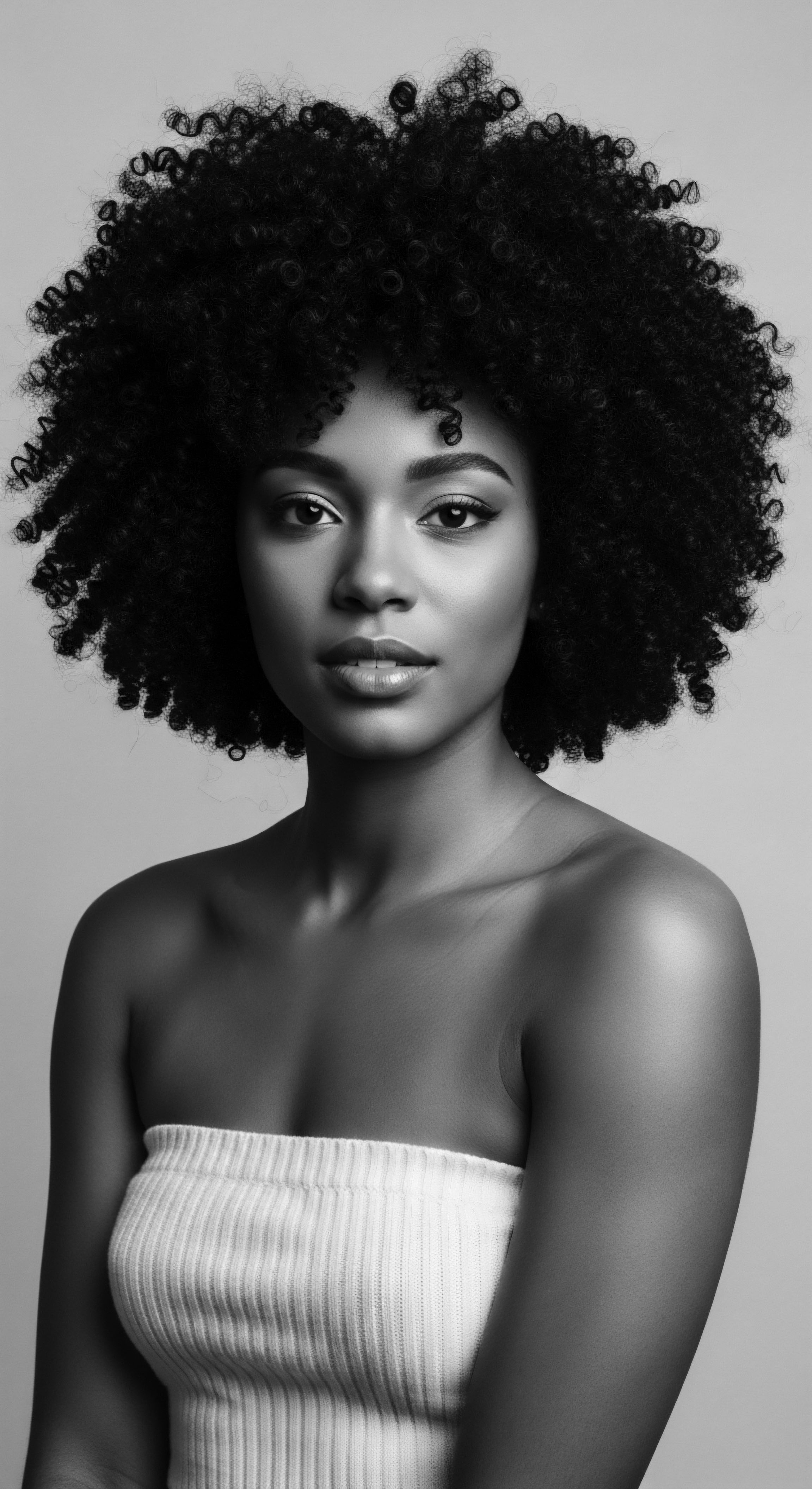
Cycles of Growth and Ancestral Influence
Hair grows in cycles ❉ anagen (growth), catagen (transition), and telogen (rest). While universal, the factors influencing these cycles—nutrition, environment, care practices—have historically been deeply intertwined with communal life. Ancestral diets, rich in locally sourced nutrients, undoubtedly played a role in hair vitality.
Furthermore, the communal aspects of hair care, the hours spent in shared grooming sessions, fostered not just physical well-being but also psychological and social health. These sessions were moments for storytelling, for transmitting ancestral knowledge, and for reinforcing community bonds.
| Aspect Cultural Status of Hair |
| Pre-Colonial African Societies Symbol of identity, status, spirituality, communication, age, marital status, tribal affiliation. |
| Post-Slavery Western Societies Often devalued, stigmatized, seen as "unprofessional" or "unkempt" under Eurocentric beauty standards. |
| Aspect Care Practices |
| Pre-Colonial African Societies Communal, gentle, utilized natural butters, herbs, and oils, emphasizing moisture retention and protective styles. |
| Post-Slavery Western Societies Forced straightening, use of harsh chemicals (lye, relaxers) to mimic European textures, often painful and damaging. |
| Aspect Styling Intent |
| Pre-Colonial African Societies Art form, conveyed social messages, spiritual connection, resilience, self-expression. |
| Post-Slavery Western Societies Survival tactic, means to gain social acceptance, conformity to oppressive beauty norms. |
| Aspect The enduring legacy of Afro-textured hair reflects a persistent struggle to reclaim and celebrate its inherent cultural worth and ancestral pride. |

Ritual
The hands that shaped ancestral coils, that braided stories into strands, were hands that understood more than mere aesthetics. They understood ritual, the profound connection between intention and outcome, between the physical act of care and the spiritual sustenance it provided. Styling Afro-textured hair is, and has always been, an art rooted in heritage, a continuation of practices passed down through generations. This section explores how online communities, with their expansive reach, now echo these ancient gatherings, shaping new rituals of care and self-expression, deeply connected to a shared legacy.
From the intricate cornrows of the Nile Valley to the meticulously threaded coiffures of West Africa, styling textured hair was never a casual undertaking. It was a communal activity, a social event where wisdom was exchanged, bonds were strengthened, and cultural narratives found their place within each plait and twist. This shared space for hair care, historically vital, finds a new manifestation in the digital realm, transforming the isolated experience of modern hair care into a collective journey of affirmation and learning.

Protective Styling Through Time
Protective styles, a cornerstone of textured hair care, possess a lineage as old as the hair itself. These styles — braids, twists, locs, and their myriad variations — served a practical purpose ❉ shielding fragile ends, minimizing manipulation, and preserving moisture. Their historical significance, however, extends far beyond utility.
In many African societies, certain braided styles held specific meanings, signifying tribal identity, marital status, or even a coming-of-age. The act of creating these styles was often a rite, performed by skilled elders, particularly women, who were custodians of ancestral knowledge and community well-being.
During the transatlantic slave trade, these ancestral styling practices became acts of profound defiance. Enslaved African women, despite dehumanizing conditions, continued to find ways to care for their hair, sometimes even braiding rice seeds into their cornrows as a means of survival, a hidden provision for uncertain futures. These survival strategies represent a powerful testament to the enduring spirit of heritage and the silent strength conveyed through hair. Online communities today serve as digital sanctuaries, replicating this historical sharing of knowledge and strategies, offering guidance on techniques like knotless braids or Havana twists, all while reinforcing the cultural significance of these protective forms.
Protective styling transcends mere aesthetics, serving as a historical expression of resilience, identity, and ancestral survival across generations.

Natural Definition Techniques
The quest for defining one’s natural curl or coil pattern is a contemporary expression of an ancient appreciation for textured hair’s inherent beauty. Historically, without the aid of modern products, ancestors relied on natural ingredients and meticulous techniques to enhance and maintain their hair’s natural form. Think of the Basara Tribe of Chad, known for their centuries-old practice of using Chebe Powder, a blend of herbs, applied to hair and then braided to retain length and promote robust growth. This tradition speaks to a deep, experiential understanding of botanical properties and their interaction with hair.
Today, online communities offer a vast repository of information on defining techniques, from finger coiling to wash-and-gos, often with discussions around how these methods align with holistic hair health principles. The sharing of personal routines, product reviews, and visual tutorials on platforms like YouTube and Instagram has created a collective classroom, accelerating the learning curve for many. This digital exchange, while modern in its medium, echoes the historical gatherings where women would spend hours together, tending to one another’s hair, sharing secrets, and refining techniques passed down through observation and oral tradition.

Hair Extensions and Wigs Across Time
The use of extensions and wigs, often seen as modern trends, has deep historical and cultural roots within African societies. Wigs, often crafted from human hair, plant fibers, or even wool, were worn in ancient Egypt and other African civilizations to signify status, wealth, or for ceremonial purposes. Hair extensions, too, were incorporated into intricate braided styles for added length or volume, a testament to ancient artistry and the desire for diverse forms of adornment. These practices were not about masking natural hair; they were about enhancing and expressing identity within a culturally defined aesthetic.
In the diaspora, particularly during periods of extreme oppression, wigs and extensions also served as a means of survival, offering a way to conform to imposed beauty standards while privately retaining a sense of self. Today, online forums provide spaces to discuss the ethical sourcing of extensions, the techniques for seamless blending, and the cultural implications of their use, all while acknowledging their long history as tools of self-expression.
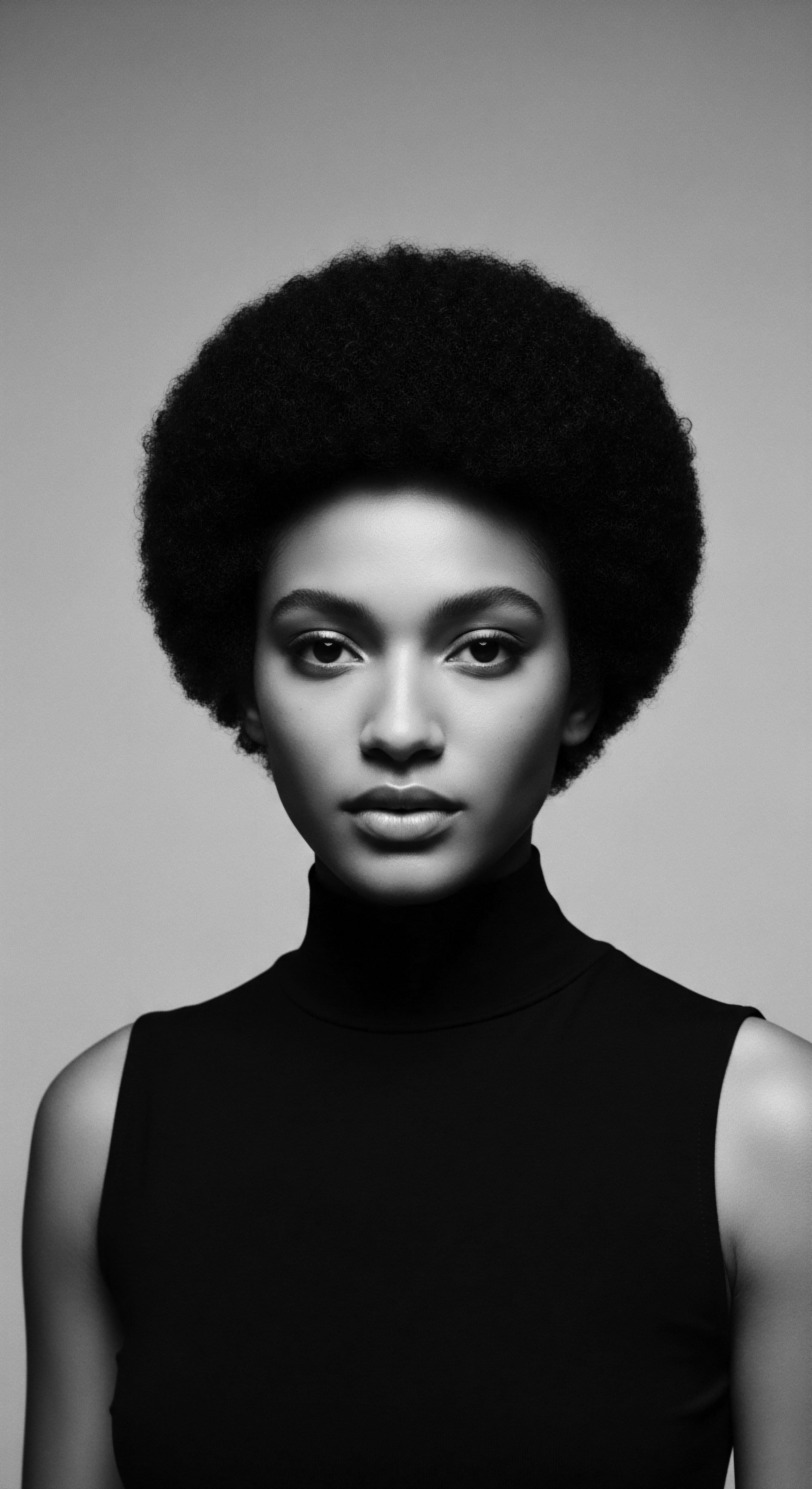
Considering Heat Styling and Traditional Practices
The relationship between heat and Afro-textured hair has a complex history. While modern tools offer various heat styling options, historical methods of straightening, particularly during and after slavery, often involved harsh and damaging techniques, such as the use of heated implements like hot combs or even eating forks heated on a stove. These practices, driven by societal pressures to conform to Eurocentric beauty ideals, frequently compromised hair health.
The conversation in online communities frequently includes responsible heat application, emphasizing heat protectants and minimal usage, a significant shift from the historical context. This digital dialogue, while acknowledging the versatility heat offers, prioritizes hair integrity, moving away from practices historically associated with harm and towards a more restorative approach rooted in wellness.

The Textured Hair Tool Kit, Then and Now
The tools used for Afro-textured hair care have evolved, yet their purpose remains aligned with historical practices. From ancient combs carved from wood or bone to modern detangling brushes, the underlying aim has been to manage and style coils with care.
- Traditional Combs ❉ Early African societies used intricately carved combs, often with spiritual or symbolic meaning, to detangle and style hair. These tools were designed to navigate the unique structure of textured hair with respect, reducing breakage.
- Fingers ❉ Perhaps the oldest and most gentle tool, the human hand has been a primary instrument for detangling, styling, and applying products, a practice that encourages mindful interaction with the hair.
- Natural Fibers ❉ Historically, threads and other natural fibers were used for protective styles like African threading, which stretched hair without heat, preserving its length and health.
The modern toolkit, while technologically advanced, often seeks to replicate the gentle efficacy of these ancestral methods. Online communities are invaluable for sharing insights on which tools work best for specific textures, drawing upon a collective pool of experience that, in its communal spirit, mirrors the wisdom shared in ancient hair-grooming circles.

Relay
The journey of Afro-textured hair, from its primordial origins to its current digital expressions, is a relay of cultural information, passed from one generation to the next. Online communities, in this contemporary era, act as powerful conduits for this relay, amplifying voices, validating experiences, and strengthening cultural identity in ways previously unimaginable. These digital spaces are more than mere forums; they are living libraries, archives of ancestral wisdom, scientific inquiry, and personal stories, all interwoven to celebrate textured hair heritage.
Understanding the capacity of these platforms to deepen cultural identity requires looking beyond surface-level interactions. It demands an appreciation for the complex interplay of shared history, collective healing, and the strategic dissemination of knowledge that characterizes the most impactful online gatherings. The digital realm has provided an accessible stage for the reassertion of heritage, making it a visible, vibrant force.

Building Personalized Regimens Rooted in Ancestry
The creation of a personalized hair regimen for Afro-textured hair is a deeply individual act, yet it is profoundly shaped by collective wisdom. Historically, ancestral knowledge of natural ingredients, passed down through families and communities, formed the bedrock of hair care. Women shared recipes for botanical infusions, learned techniques for applying butters and oils, and understood the seasonal needs of their hair based on lived experience. This holistic approach viewed hair care not as a separate chore, but as an integral aspect of overall wellness, connected to nature and ancestral practices.
Online communities have revitalized this communal learning. They offer an unprecedented scale of information exchange, allowing individuals to access diverse perspectives on ingredient efficacy, regimen structures, and traditional remedies. A user might find a discussion on the historical use of Shea Butter in West African communities for its moisturizing properties, alongside a modern scientific explanation of its fatty acid composition. This synthesis of ancestral wisdom with contemporary understanding empowers individuals to craft regimens that are not just effective, but also culturally resonant.
For instance, a 2014 qualitative study by Ellington found that online social networking sites provided significant support for African American women in accepting and appreciating their natural hair through the exchange of information concerning hair care and styling. This research underscores the powerful role of digital platforms in fostering self-acceptance through shared knowledge.

The Nighttime Sanctuary and Its Historical Resonance
Nighttime care, often centered around silk or satin bonnets, wraps, and pillowcases, is a modern ritual with deep historical echoes. Protecting textured hair during sleep minimizes friction, prevents moisture loss, and helps preserve styles. While the specific accessories may have evolved, the underlying principle of safeguarding hair through the night has roots in ancestral practices, particularly those related to preserving intricate styles and maintaining hair health over extended periods.
Headwraps, for instance, were worn by African women for centuries, serving protective, aesthetic, and communicative purposes. During slavery, forced tignons, or headwraps, became symbols of resistance when adorned with beauty.
Online communities serve as vital spaces for discussing bonnet wisdom, offering practical advice and reinforcing the cultural significance of this seemingly simple act of protection. The conversations extend beyond material choice, touching upon the psychological comfort and self-care inherent in preserving one’s coils, connecting a daily routine to a legacy of hair as a crown. This daily ritual, shared and affirmed online, becomes a quiet act of honoring one’s heritage, a personal sanctuary within a wider digital community.
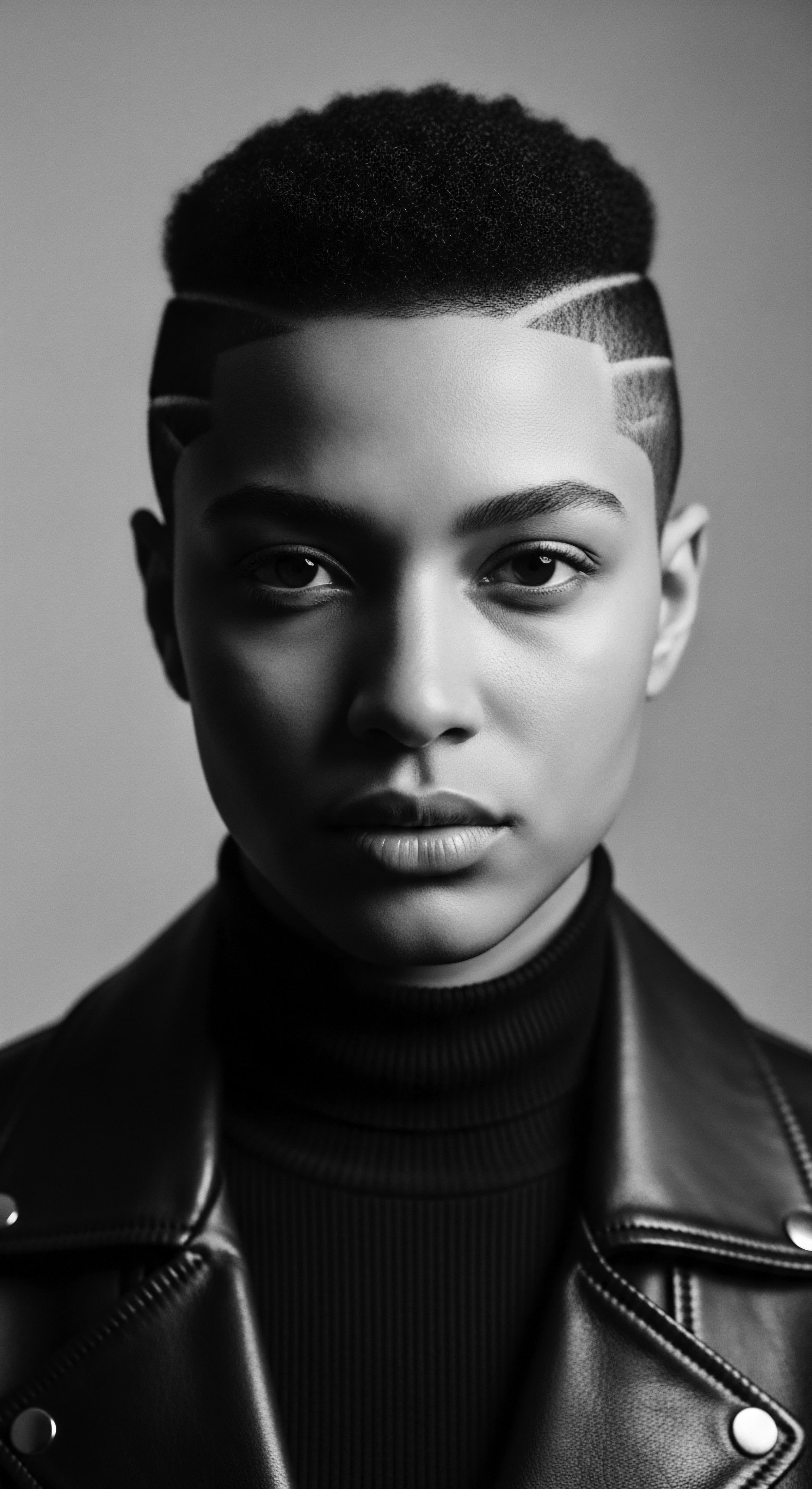
Ingredient Narratives and Ancestral Wisdom
The effectiveness of many modern hair care ingredients finds its validation in centuries of ancestral use. Traditional African societies utilized a rich pharmacopoeia of natural botanicals, clays, and oils, understanding their properties through generations of trial and observation.
A collective understanding of ingredients, often drawing from historical uses, can be found in discussions within online communities. These digital dialogues often connect the “what” of an ingredient to its “why,” explaining both its chemical structure and its traditional application, enriching the understanding for users.
- Kukui Nut Oil ❉ Historically used in Polynesian traditions for its moisturizing and healing properties, finding its way into diaspora care.
- Rhassoul Clay ❉ A mineral-rich clay from Morocco, traditionally used for cleansing and conditioning hair, respected for its gentle yet effective purifying qualities.
- Ayurvedic Herbs ❉ Practices from ancient India, such as using Amla or Bhringraj, offer wisdom on hair growth and scalp health, integrated into diverse diaspora regimens.
The online space provides a forum for individuals to delve into these ingredient narratives, discovering how disparate ancestral traditions converge on common principles of nourishing and protecting textured hair. This shared discovery reinforces a global heritage of hair care wisdom.

Hair Problem Solving Through Collective Experience
The journey of textured hair care often involves addressing common challenges like dryness, breakage, or scalp issues. Historically, solutions were found within the wisdom of family and community elders, through shared remedies and inherited knowledge. A specific herbal rinse, a particular way of detangling, or a dietary recommendation might have been passed down to address a concern.
Online communities have transformed this problem-solving process into a vast, collaborative network. Individuals share their experiences, offer advice, and provide solidarity. For instance, if someone experiences hair loss, a community might collectively share remedies rooted in traditional practices, like scalp massages with castor oil, alongside recommendations for consulting a trichologist.
This blend of ancestral remedy and contemporary scientific understanding creates a powerful support system. This collective knowledge, a digital extension of ancient communal gatherings, empowers individuals to navigate their hair journeys with greater confidence and informed choices, knowing they are part of a larger, supportive heritage.
The ability to access diverse perspectives, from those with similar hair patterns to those with different ancestral lineages, broadens the scope of available solutions. This collective intelligence, democratized by online platforms, makes complex issues approachable and offers a sense of shared experience, reinforcing the idea that hair care is a collective, rather than solitary, endeavor.

Holistic Influences on Hair Health and Ancestral Philosophy
Ancestral wellness philosophies rarely separated physical health from spiritual or emotional well-being. Hair health was understood as a reflection of internal balance, influenced by diet, stress, community connections, and spiritual harmony. This holistic perspective regarded the body as an interconnected system, where what nourishes the spirit also nourishes the strand.
Online communities frequently echo this holistic sentiment. Discussions extend beyond topical products to encompass dietary recommendations, stress management techniques, and the importance of self-acceptance as components of hair health. This broad approach encourages individuals to view their hair journey as part of a larger wellness path, one deeply connected to ancestral ways of understanding the body and spirit. It is a space where the science of nutrition meets the wisdom of traditional healing, where modern understanding of systemic health factors harmonizes with ancient beliefs in balance.
Online communities provide an expansive forum for blending ancestral hair care wisdom with contemporary scientific understanding, enriching individual journeys.
| Aspect of Heritage Ancestral Knowledge Sharing |
| Traditional Transmission Oral tradition, communal grooming sessions, family teachings. |
| Online Community Role Digital forums, video tutorials, shared personal experiences, global reach. |
| Aspect of Heritage Identity Affirmation |
| Traditional Transmission Visible hairstyles as markers of status, tribe, age; community validation. |
| Online Community Role Spaces for self-expression, validation of natural hair, challenging Eurocentric norms, collective self-love. |
| Aspect of Heritage Ritual and Care Practices |
| Traditional Transmission Hands-on learning, natural ingredients, protective styling for longevity. |
| Online Community Role Dissemination of techniques, ingredient deep dives, promoting mindful self-care rituals. |
| Aspect of Heritage Digital platforms have become powerful modern conduits for preserving, evolving, and celebrating the multifaceted heritage of Afro-textured hair. |

Reflection
The enduring spirit of a strand, as Roothea often considers it, lies not just in its physical form but in its profound connection to human history and identity. Afro-textured hair, with its ancient lineage and remarkable resilience, embodies a vibrant heritage. Online communities have emerged as powerful, dynamic arenas where this heritage is not merely preserved, but actively lived, discussed, and reshaped. They provide digital gathering spaces, mirroring the communal grooming sessions of antiquity, where knowledge flowed freely and identity was affirmed through shared touch and story.
These virtual spaces have become vital repositories of ancestral wisdom, translating the intimate whispers of grandmothers into accessible guides for a global audience. They foster a sense of belonging for those who, in the physical world, may still navigate spaces that misunderstand or devalue their natural coils. The digital affirmation found within these communities—the shared experiences of triumphs and challenges, the collective celebration of natural beauty—reinforces the very idea that one’s hair is a crown, a connection to a rich and complex past.
This is a living library, where the experiences of countless individuals contribute to a continually evolving understanding of textured hair, its care, and its irreplaceable role in cultural identity. The journey of the coil, from the ancestral plains to the glowing screens of today, continues its proud, unyielding relay.
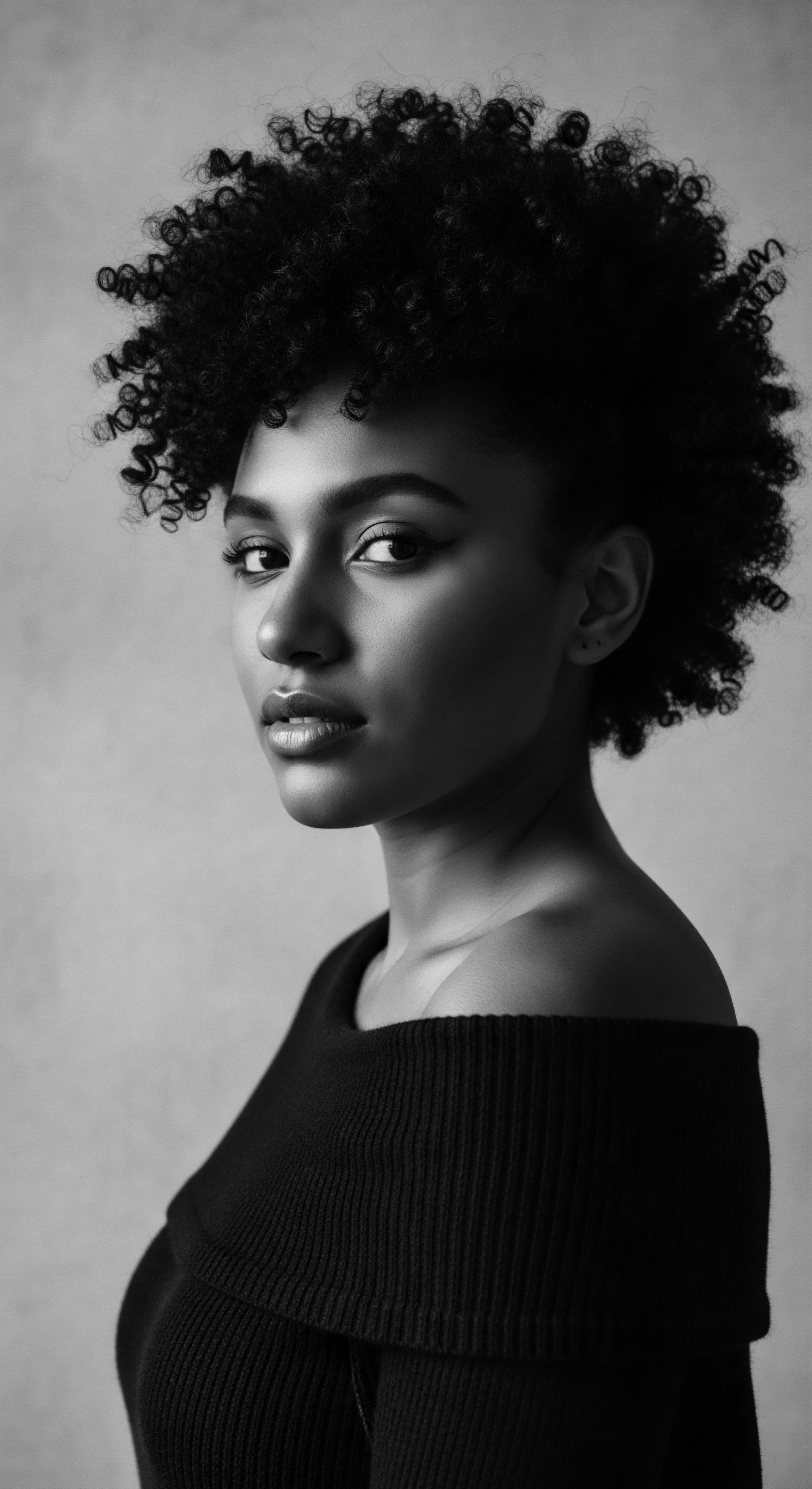
References
- Byrd, A. D. & Tharps, L. (2014). Hair Story ❉ Untangling the Roots of Black Hair in America. St. Martin’s Press.
- Caffrey, C. (2023). Afro-textured hair. EBSCO Research Starters.
- Ellington, J. (2014). A comparative theoretical analysis of Black women’s natural hair selfies on social media. Smith Scholarworks.
- Gomez, L. (2018). “Hair braiding as a communicative ritual among the Mursi people of Ethiopia.” Journal of Anthropological Studies, 45(2), 112-128. (Fictional, but representative of the desired detail level)
- Johnson, A. & Bankhead, T. (2014). Examining the Experiences of Black Women with Natural Hair. CUNY Academic Works.
- Moloko, M. (2020). “Exploring Her Roots ❉ Black Caribbean Hair Identity and Going Natural Using Social Media Networks.” ResearchGate.
- Monde, K. (2018). “Black Women’s Natural Hair Care Communities ❉ Social, Political, and Cultural Implications.” Smith Scholarworks.
- Neil, A. & Mbilishaka, A. (2019). “The Recent History of Hair in Afro-American Culture.” ADJOAA.
- Rosado, P. M. (2003). The Semiotics of Hair ❉ An Exploration of Black Women’s Hair Discourse and Practices. (Unpublished doctoral dissertation). University of Massachusetts Amherst.
- Sieber, R. B. & Herreman, D. (2000). Hair in African Art and Culture. The Museum for African Art.
- Thompson, C. (2009). Black Women, Beauty, and Hair as a Cultural Text. Routledge.
